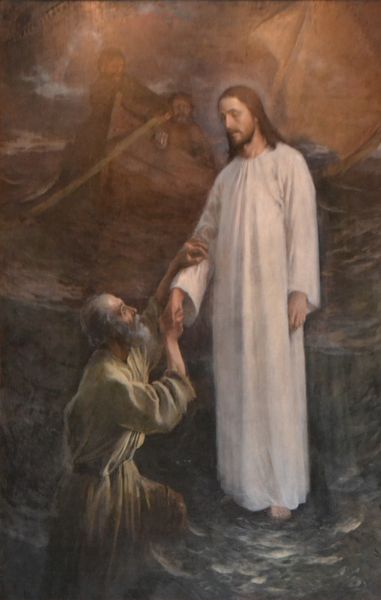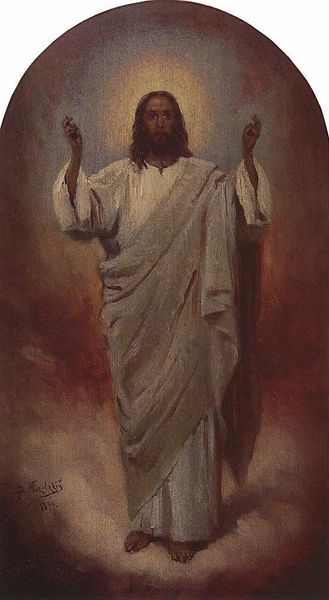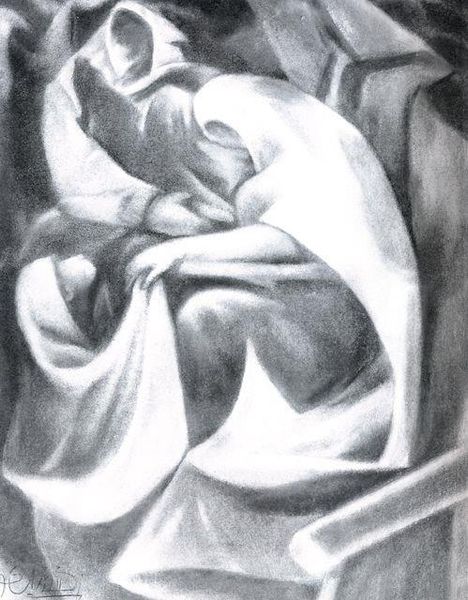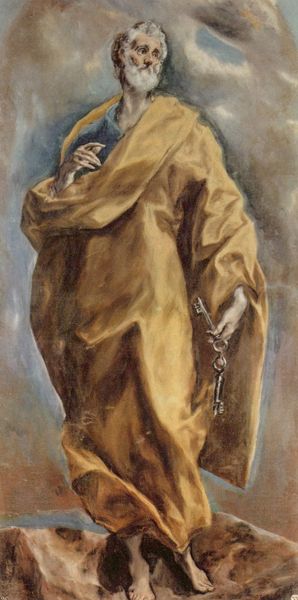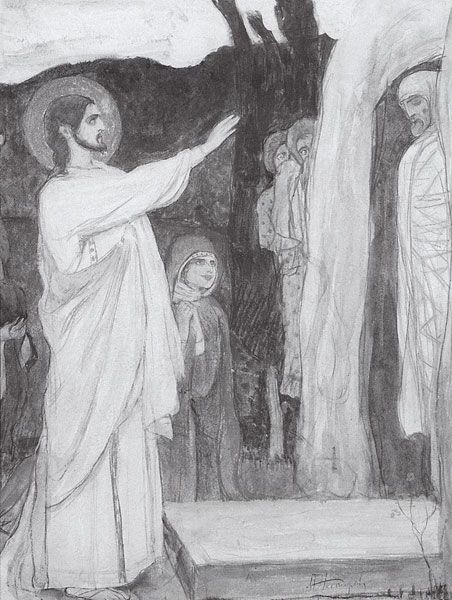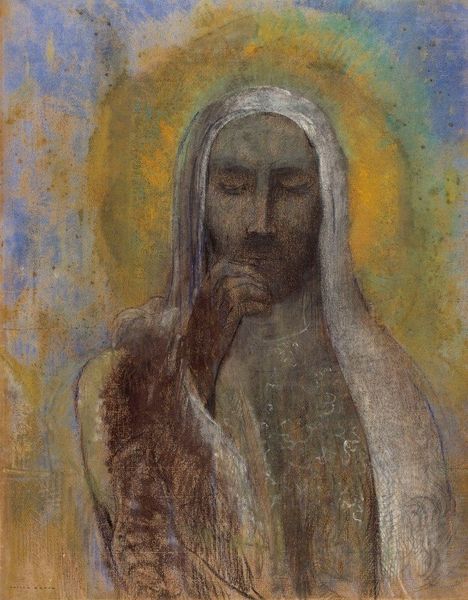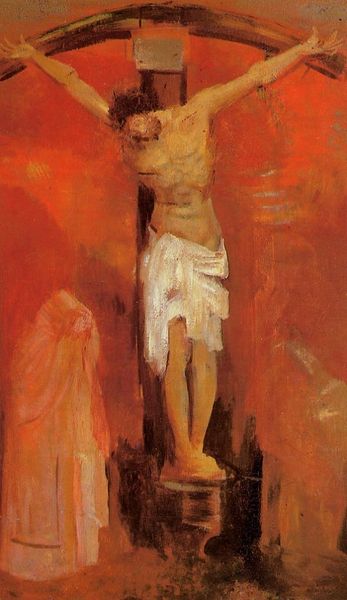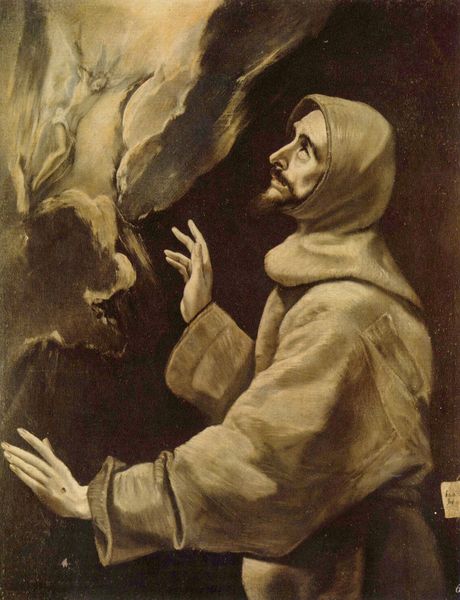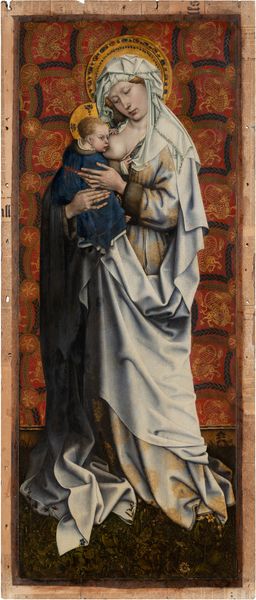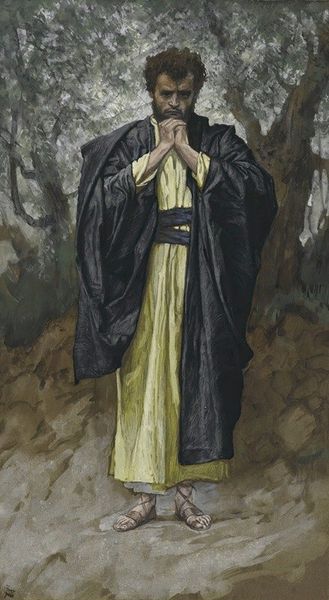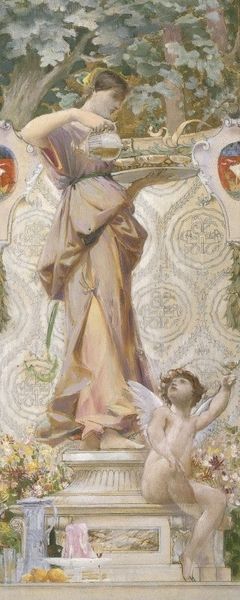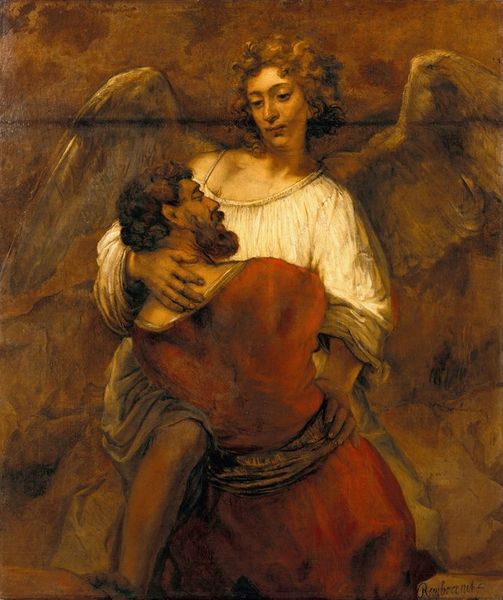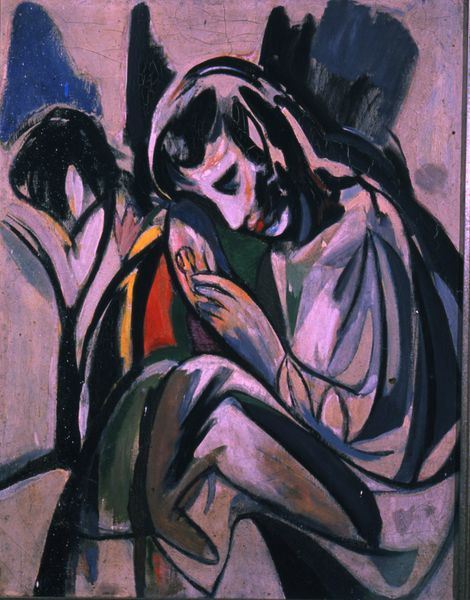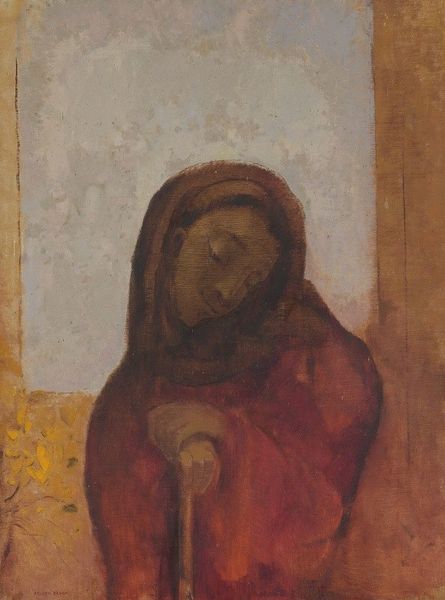
painting, oil-paint
#
portrait
#
narrative-art
#
painting
#
oil-paint
#
charcoal drawing
#
oil painting
#
portrait drawing
#
history-painting
#
academic-art
#
portrait art
#
realism
Copyright: Public Domain: Artvee
James Tissot rendered this image of Christ using watercolor over graphite. The most striking symbolic gesture is the placement of Christ’s hands clasped over his chest. In Christian iconography, this gesture can signify humility, supplication, or profound sorrow. Recall the ancient Roman tradition where conquered barbarians would adopt a similar posture, hands bound before their chest, to beg for mercy from the Emperor. A parallel, centuries later, can be found in depictions of saints or pious individuals in medieval art, where this gesture indicates devotion and humility before the divine. Consider the psychological undercurrent: the clasped hands can also be seen as a protective measure, a shielding of the heart. This resonates with the emotional weight of Christ's impending sacrifice, a burden he carries with both divine resolve and human vulnerability. Thus, the symbol transcends its immediate religious context, resurfacing as a potent expression of human emotion, echoing through time.
Comments
No comments
Be the first to comment and join the conversation on the ultimate creative platform.
